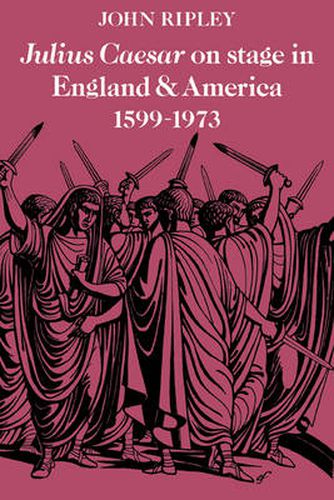Readings Newsletter
Become a Readings Member to make your shopping experience even easier.
Sign in or sign up for free!
You’re not far away from qualifying for FREE standard shipping within Australia
You’ve qualified for FREE standard shipping within Australia
The cart is loading…






Professor Ripley, in this 1980 study of Julius Caesar, offers one of the most detailed stage histories ever attempted, focusing upon aspects both of English and American staging from 1599 to 1973. His primary sources include promptbooks and groundplans, letters, diaries and reviews. He approaches the play from four different angles: he examines the texts used in all major productions, and makes valuable deductions about the taste and sensibility of an age from cuts, alterations, additions and redistribution of parts. He explains in detail the staging of the play at various points in time, and demonstrates how sets and costumes, bits of business, handling of crowd scenes and lighting affected its business. He reconstructs performances of the four main roles by the greater and lesser lights of each period. Finally, he comments on the way in which the theories of critics and, in modern times, directors’ ideas have influenced understanding of the play.
$9.00 standard shipping within Australia
FREE standard shipping within Australia for orders over $100.00
Express & International shipping calculated at checkout
Professor Ripley, in this 1980 study of Julius Caesar, offers one of the most detailed stage histories ever attempted, focusing upon aspects both of English and American staging from 1599 to 1973. His primary sources include promptbooks and groundplans, letters, diaries and reviews. He approaches the play from four different angles: he examines the texts used in all major productions, and makes valuable deductions about the taste and sensibility of an age from cuts, alterations, additions and redistribution of parts. He explains in detail the staging of the play at various points in time, and demonstrates how sets and costumes, bits of business, handling of crowd scenes and lighting affected its business. He reconstructs performances of the four main roles by the greater and lesser lights of each period. Finally, he comments on the way in which the theories of critics and, in modern times, directors’ ideas have influenced understanding of the play.